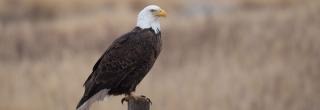
Active Bald Eagle Nest Reporting
In the spring, bald eagles nesting in North Dakota will be actively using their nest site. The Department is interested in documenting these nest sites as they increase in both number and distribution in North Dakota.
If you have recently observed an active bald eagle nest, please report it using the form below.
(If you have problems accessing the form, please use the direct link here.)
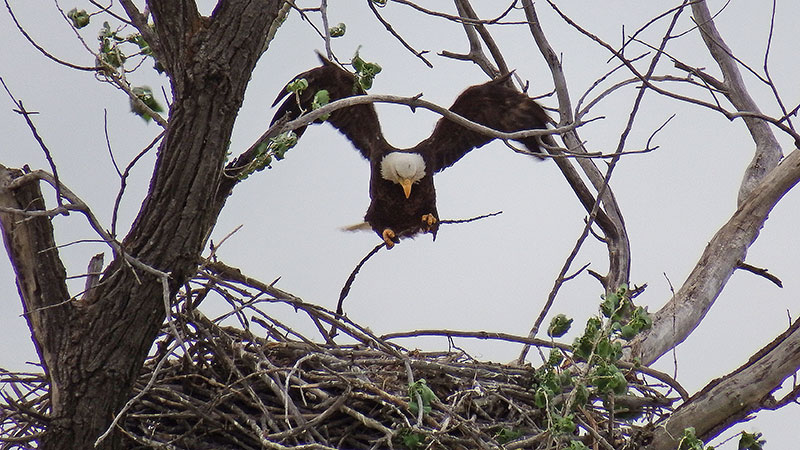
Bald Eagle Nesting Chronology in North Dakota
January - February: Nest building.
Nest building may take several months, or just a few days. The same nest may be reused annually for many years.
Late February to mid-March: Egg Laying.
Generally 1-3 eggs are laid, 2 being the most common and very rarely 4. Typically lay 1 egg per day.
About 35 days: Incubation.
Incubation begins after the first egg is laid.
Late March to mid-April: Egg Hatching.
Hatching occurs over several days, with the first hatchling being larger than the next because it will be 1-2 days older.
8-12 weeks: Rearing Young.
By early July, the young will be nearly the same size as the adults and will venture out onto the branches in the nest tree and take their first unsteady flights.
By the End of July or early August: Fledging.
By the end of July or early August, the young are fully capable of flying and will leave (fledge) the nest. However, the fledglings may remain in the general area of the nest and be fed by adults for up to 6 weeks.
Some Notes on Bald Eagles
- Bald eagles are increasing in North Dakota and may be seen any time of the year. During March/April and October/November, there are large numbers of adult and juvenile bald eagles migrating through the state.
- Bald Eagles prefer large rivers and lakes or wetlands bordered with mature stands of trees, or a single large tree, such as cottonwood.
- Breeding habitat often includes some type of edge and relatively open canopy.
- The large nests are usually built within the top quarter of tall, living trees, with fewer nests in dead trees.
- Nests are generally 5-6 feet in diameter and 2-4 feet tall.
- Nests are relatively close to water, typically less than 2 km.
- Bald Eagles are opportunistic and feed on a variety of fish, mammals, birds, and carrion.
Bald Eagle Identification
While adult bald eagles are easily recognizable with their white heads and tails, juvenile bald eagles may sometimes be mistaken for golden eagles. Over the course of their first couple of years, bald eagle coloration will range from almost solid brown to brown with white blotches.
Detailed information on bald eagles and bald eagle identification can be found on the Cornell Lab of Ornithology website.
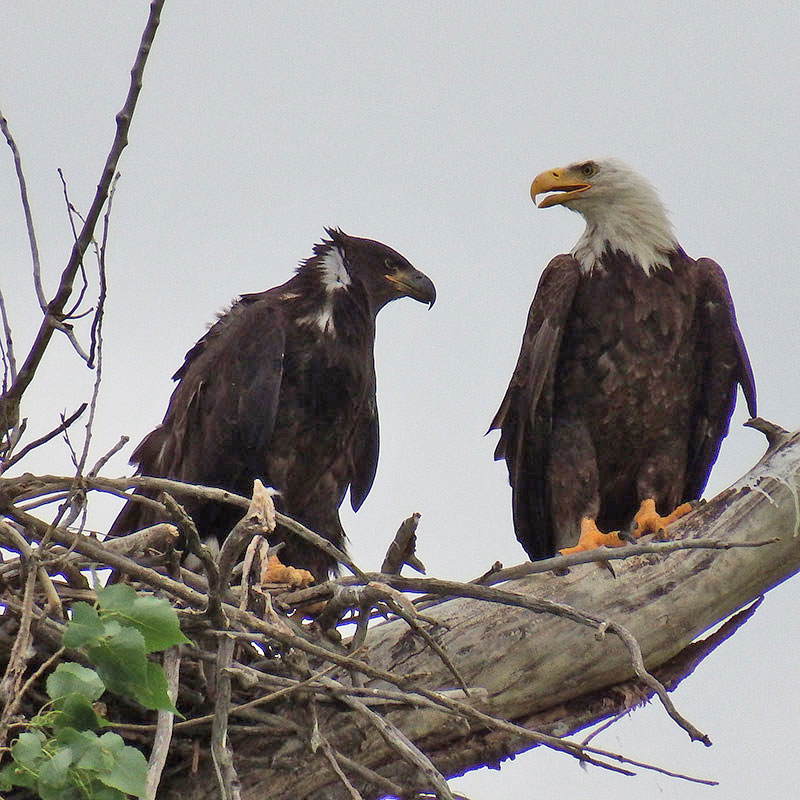
Chick nearing fledging (left) with parent
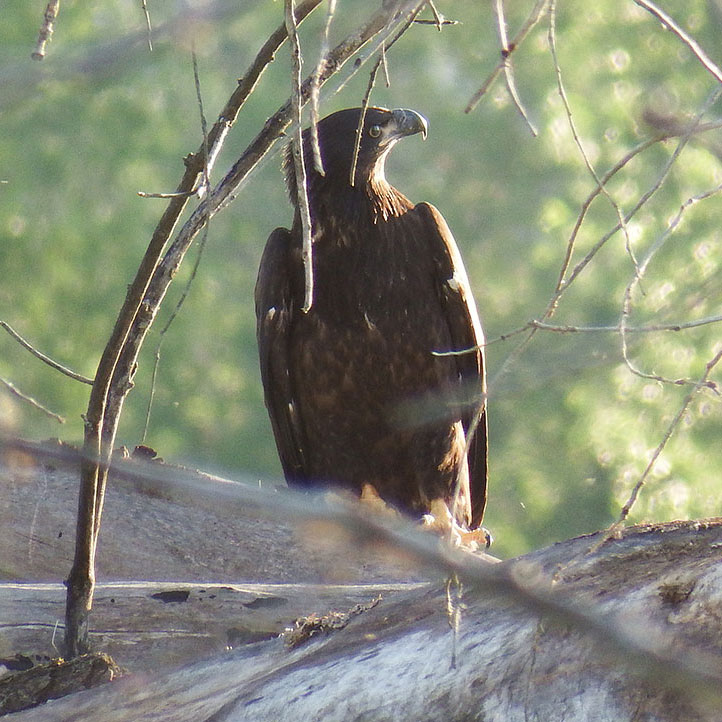
Recently fledged chick
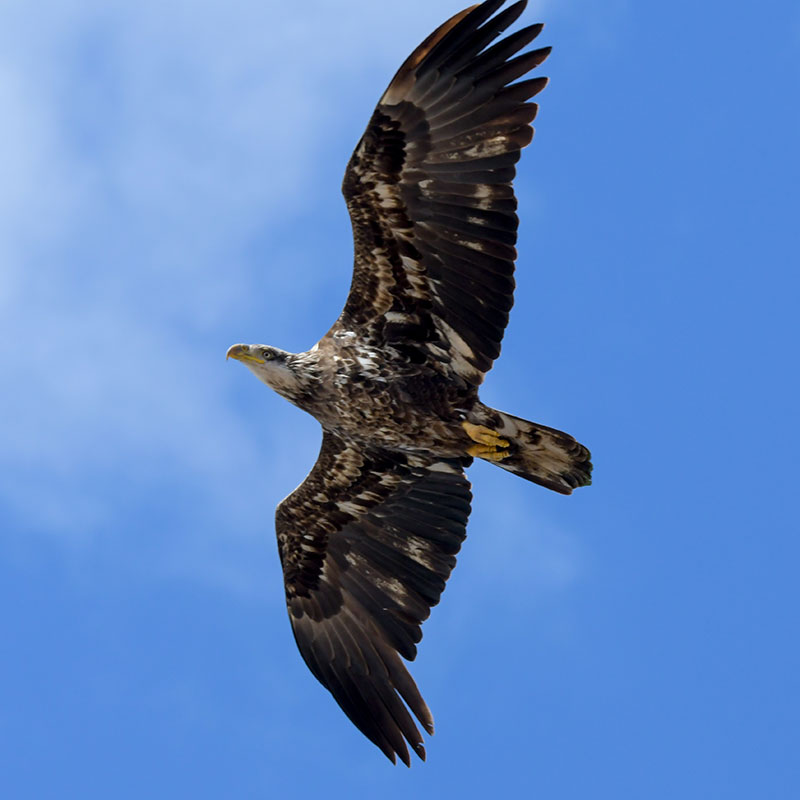
Transitional coloring
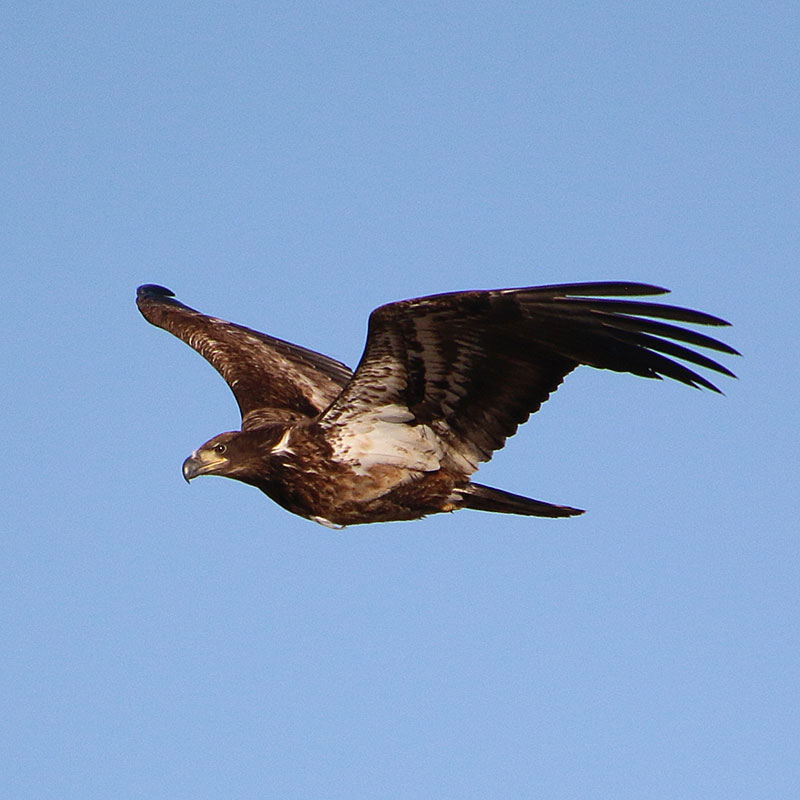
Transitional coloring
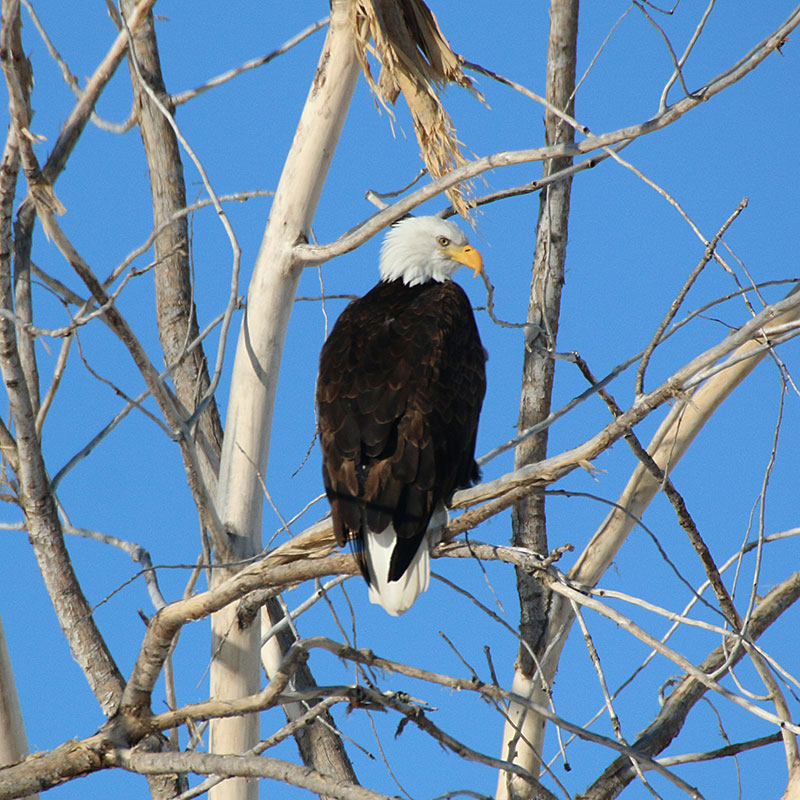
Adult coloring
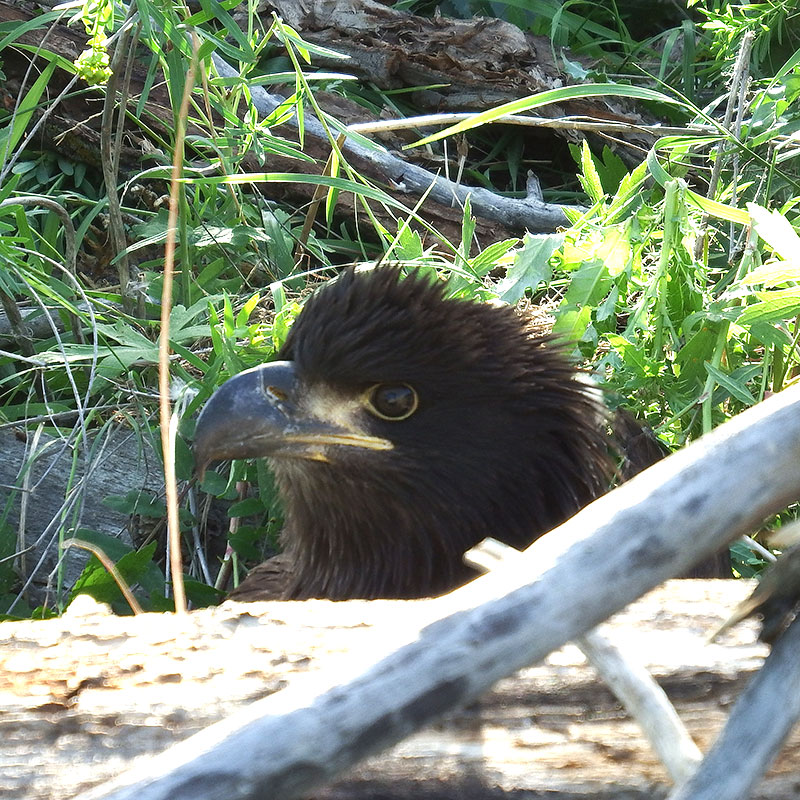
Note: It is not uncommon to observe young eaglets and other raptors on the ground.
Their parents are likely nearby.
Do not approach or handle the youngster.
